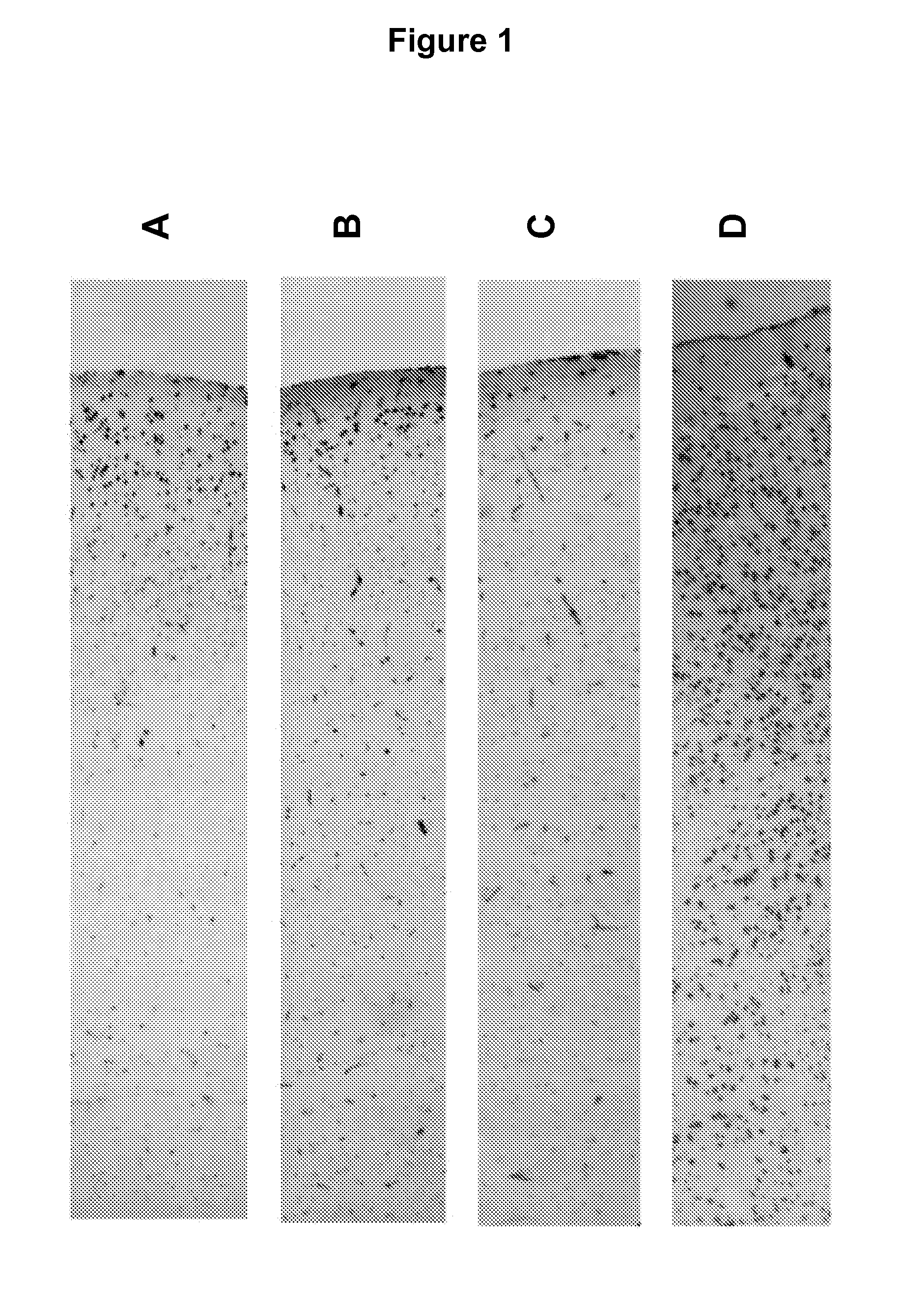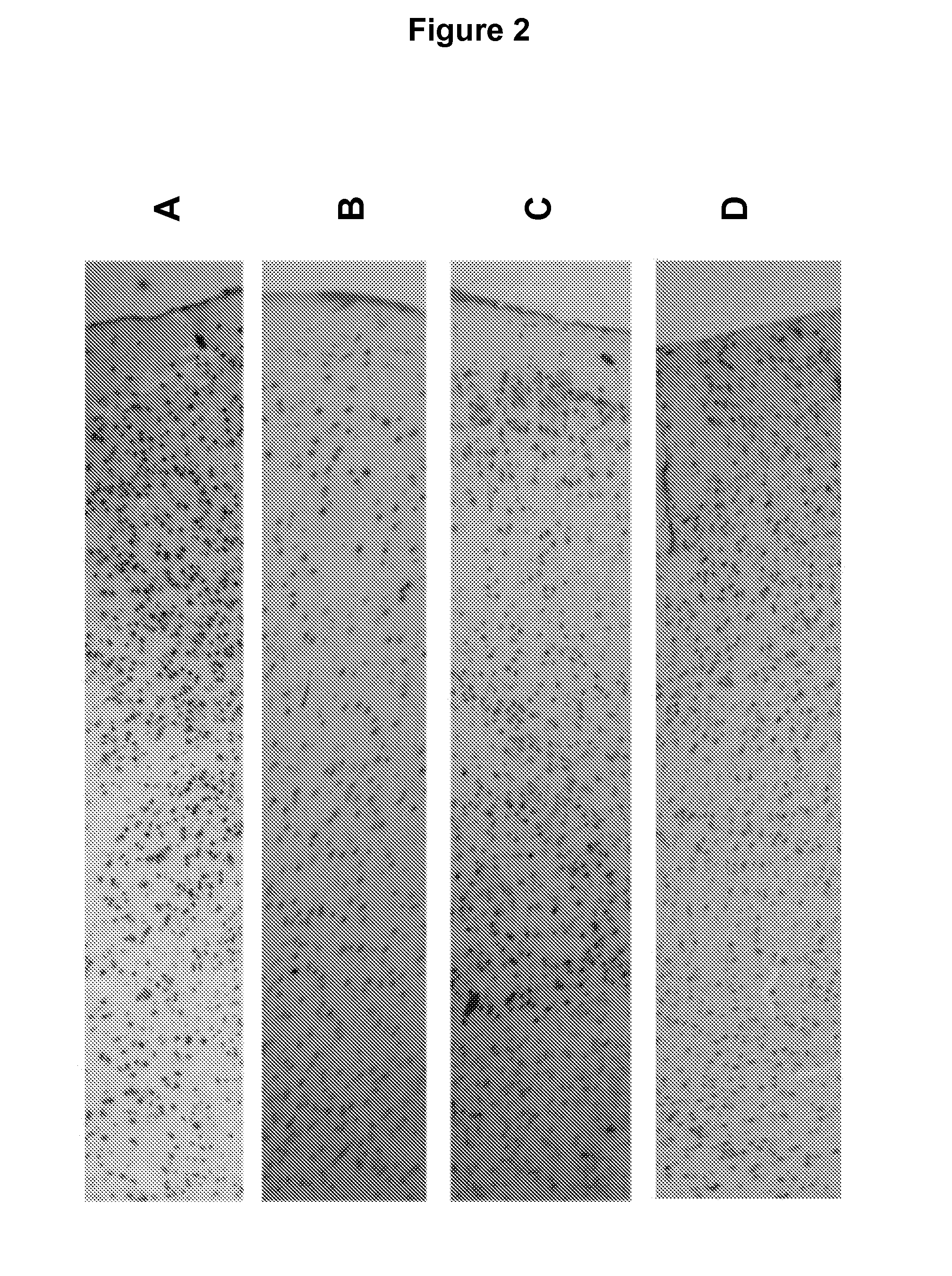Stabilization method for biological samples by combination of heating and chemical fixation
a biological sample and chemical fixation technology, applied in the field of biological sample stabilization, can solve the problems of difficult detection, difficult detection, difficult detection, etc., and achieve the effect of avoiding degradation of other constituents of samples, shortening the time needed to obtain blocking of enzymatic processes, and facilitating effective heating
- Summary
- Abstract
- Description
- Claims
- Application Information
AI Technical Summary
Benefits of technology
Problems solved by technology
Method used
Image
Examples
example 2
Stabilization of Samples from Mice Brain
Experimental
Biological Samples and Treatments
[0076]Mice were sacrificed by cervical dislocation and sample collected immediately. Whole brains were excised immediately following sacrifice and stabilized by heat treatment in the Stabilizor T1 instrument (Denator AB, Sweden) at auto settings for fresh tissue and subsequently incubated in room temperature for the following periods of time, A: 0 min, B: 15 min, C: 6 h, and D: 24 h prior to being submerged in NBF.
[0077]All samples were kept for 24 h in formalin solution at room temperature prior to paraffin imbedding. All samples were incubated without further sub dissection in the NFB. Prior to paraffin embedding samples were cut into halves and embedded such that sections could be cut through the centre of the original sample.
[0078]Histochemistry, Immunohistochemistry, and Image capture and processing were performed as described in Example 1.
Results
[0079]FIG. 2 describes the results of Immunohist...
PUM
| Property | Measurement | Unit |
|---|---|---|
| temperature | aaaaa | aaaaa |
| temperature | aaaaa | aaaaa |
| temperature | aaaaa | aaaaa |
Abstract
Description
Claims
Application Information
 Login to View More
Login to View More - R&D
- Intellectual Property
- Life Sciences
- Materials
- Tech Scout
- Unparalleled Data Quality
- Higher Quality Content
- 60% Fewer Hallucinations
Browse by: Latest US Patents, China's latest patents, Technical Efficacy Thesaurus, Application Domain, Technology Topic, Popular Technical Reports.
© 2025 PatSnap. All rights reserved.Legal|Privacy policy|Modern Slavery Act Transparency Statement|Sitemap|About US| Contact US: help@patsnap.com


